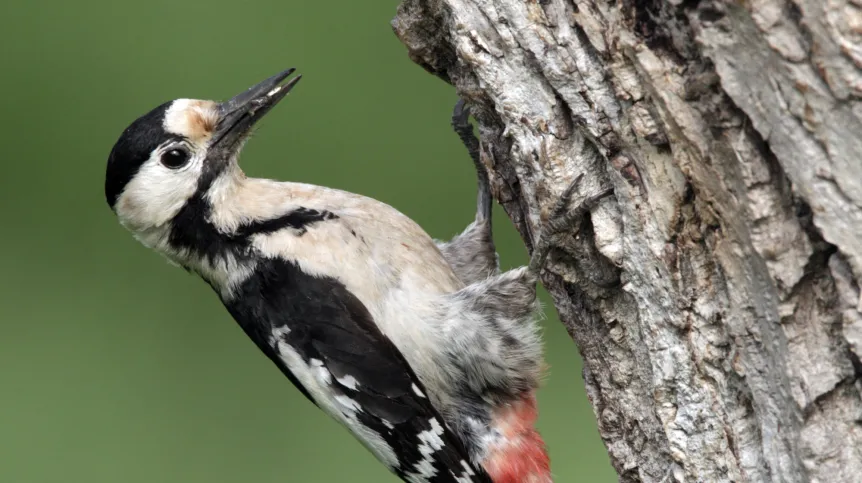
Syrian woodpecker, relative of common in Poland great spotted woodpecker, populates more and more areas in the north west of the country. Scientists do not know how its movements affect native species of birds, so they encourage nature lovers to observe this species.
Because scientists still do not have full knowledge of the Syrian woodpecker, it is important to systematically collect information on this species. Specialists of the Institute of Systematics and Evolution of Animals of the Polish Academy of Sciences encourage its observation.
Months particularly favorable for Syrian woodpecker observations are March and April, peak period of activity of these birds. "Woodpeckers before breeding period show increased activity related to the occupation of the territories, courtship, and then boring nesting holes. They announce their presence loudly and are relatively easy to spot" - according to the Polish Society for the Protection of Birds (OTOP) website.
Syrian woodpecker is very similar to its close relative, great spotted woodpecker - the most common species of woodpecker in Poland. However, there are several features which distinguish the two species. Syrian woodpecker has bright nasal feathers at the base of the bill, pink under tail; gentle lines on the sides of the body. The three outer tail feathers show only a few white spots, and Syrian does not have the black line connecting the moustachial stripe to the nape.
Syrian woodpecker inhabits diverse range of habitats, but prefers river valleys, old orchards, avenues and rows of trees, wooded cemeteries, parks and allotments. Since the 1970s, Syrian woodpeckers have populated mainly the eastern part of the country. The theoretical limit of their range runs north of Białystok, towards the south-west, passing north of Warsaw, reaching the vicinity of Płock and turning south towards Upper Silesia. Outside of this area, they were spotted in Wrocław.
"The breeding area of this species continues to move to the northwest. We still do not know how these ongoing changes affect native species, mainly in the great spotted woodpecker. The inverse relationship is also unknown" - according to OTOP .
People who want to help researchers and make their own observations, should use the "voice stimulation" method. It consists in using a mobile phone to play a voice recording of woodpecker’s mating voice and drumming in a potential habitat, and then listening for a response. Sound emitting and listening series should be repeated. However, if a woodpecker is detected, observer should should immediately stop the sound. In total, checking one site should take up to 10 minutes.
Both the presence of Syrian woodpecker and its lack should be recorded, as well as the presence of other observed species of woodpeckers and starlings. If no species is observed, the control must be repeated at least a week later and - if possible - sites of observation confirmed.
Details of the action, contact details of persons to whom you should send the collected observations and Syrian woodpecker sample sounds are available on the website.
PAP - Science and Scholarship in Poland
ekr/ mrt/
tr. RL













